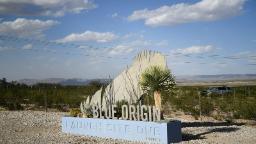[ad_1]

The Federal Aviation Administration said in a statement to CNN Business on Monday that it will oversee an investigation of the “mishap,” and noted that there were no injuries or property damage reported.
“The anomaly that occurred triggered the capsule escape system,” the FAA statement said. “The capsule landed safely and the booster impacted within the designated hazard area.”
“Before the New Shepard vehicle can return to flight, the FAA will determine whether any system, process, or procedure related to the mishap affected public safety,” the agency added. “This is standard practice for all mishap investigations.”
“It appears we’ve experienced an anomaly with today’s flight, this was unplanned and we do not have any details yet, but our crew capsule was able to escape successfully,” Erika Wagner, a Blue Origin employee, said during the livestream of the launch.
This was the first dedicated payload flight for the New Shepard since August 2021, and the ninth flight for this specific vehicle, according to Blue Origin.
The private space-faring company, which was founded by Amazon billionaire Jeff Bezos, tweeted at 10:40 a.m. ET it was “responding to an issue this morning at our Launch Site One location in West Texas.” The tweet continued: “More information to come as it is available.”
Blue Origin did not immediately respond to CNN Business’ request for further comment Monday morning.
[ad_2]
